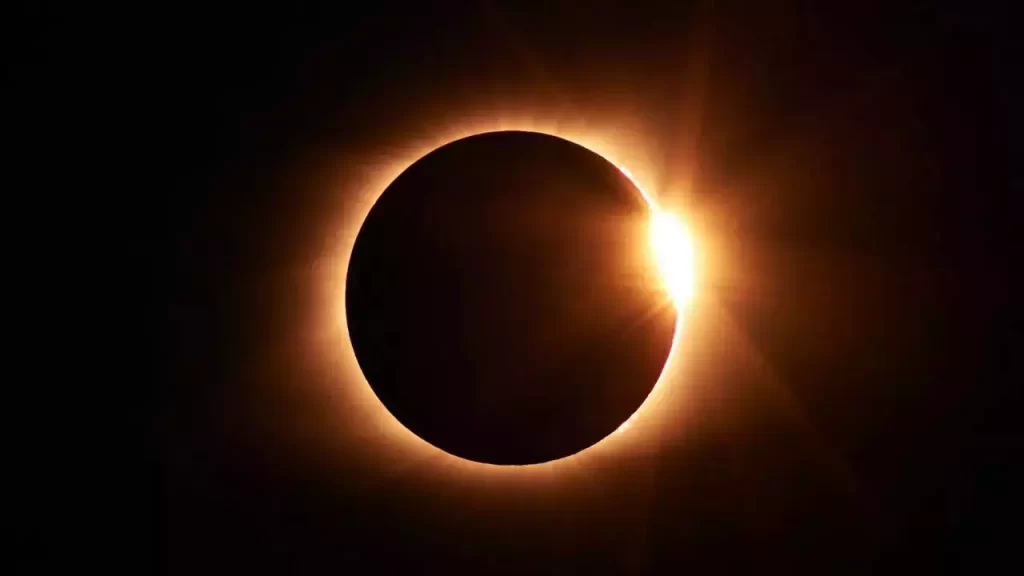The 2024 Solar Eclipse: A Captivating Celestial Event for California
On April 8, 2024, a highly anticipated solar eclipse will grace the skies over North America, offering a rare and awe-inspiring spectacle for millions of viewers. While the path of totality – where the moon completely covers the sun – will not pass directly over California, the Golden State will still be treated to a mesmerizing partial eclipse that is sure to captivate stargazers and astronomy enthusiasts alike.In this comprehensive article, we’ll delve into the details of the 2024 solar eclipse, exploring what Californians can expect to see, the best viewing locations, safety precautions, and the broader significance of this celestial event. Whether you’re a seasoned eclipse chaser or a curious first-time observer, this guide will equip you with the knowledge and tools to make the most of this remarkable astronomical phenomenon.
The Science Behind the 2024 Solar Eclipse
A solar eclipse occurs when the moon passes between the sun and the Earth, temporarily blocking the sun’s light and casting a shadow on a portion of our planet. The 2024 eclipse is a particularly special event because it will be a total solar eclipse, meaning the moon will completely cover the sun’s disk for a brief period, revealing the sun’s faint outer atmosphere, known as the corona.The path of totality – the area where the moon will fully obscure the sun – will stretch across a 115-mile-wide swath, cutting diagonally across the United States from Texas to Maine. While California will not be within this path, the state will still experience a partial eclipse, where the moon will cover a significant portion of the sun’s surface.According to NASA, the eclipse will begin in California around 10:00 AM local time, with the maximum eclipse occurring at different times depending on your location within the state. The duration of the partial eclipse will also vary, but most Californians can expect to witness the celestial event for approximately two hours.
Viewing the Eclipse in California
Though California will not experience the awe-inspiring “totality” of a complete solar eclipse, the partial eclipse visible from the state will still be a captivating sight. Here’s a breakdown of what Californians can expect to see:
Northern California: Cities in the northern part of the state, such as Eureka and Redding, will see the smallest portion of the sun obscured, with a maximum eclipse coverage of around 27% and 32%, respectively.
Central California: The Sacramento and San Francisco Bay Area will witness a more substantial partial eclipse, with the sun’s surface being covered by approximately 34% at the peak of the event.
Southern California: Residents of Los Angeles, San Diego, and other southern cities will experience the most significant partial eclipse in the state, with up to 49% of the sun’s disk being blocked by the moon.Regardless of your location, it’s crucial to take proper safety precautions when viewing the eclipse. Staring directly at the sun, even during a partial eclipse, can cause permanent eye damage. To safely observe the event, you’ll need to use approved solar eclipse glasses or a specialized solar filter for your telescope or camera.
Celebrating the Eclipse in California
Across the state, communities are gearing up to host a variety of events and activities to commemorate the 2024 solar eclipse. From educational workshops and stargazing parties to live music performances and community festivals, there will be no shortage of ways for Californians to engage with and celebrate this remarkable celestial event.Many of the state’s museums, science centers, and astronomy clubs are planning special programming and viewing opportunities for the eclipse. For example, the California Academy of Sciences in San Francisco will be hosting a range of activities, including live-streamed views of the eclipse, solar observing on the Living Roof, and educational presentations on the science behind these phenomena.Local governments and tourism boards are also getting in on the action, promoting eclipse-themed events and encouraging residents and visitors to take advantage of the unique viewing opportunities. Some cities, such as Los Angeles and San Diego, are even organizing organized eclipse-watching parties at parks and other public spaces to foster a sense of community and wonder around the event.
The Broader Significance of the 2024 Solar Eclipse
While the 2024 solar eclipse may not be a total eclipse for California, it is still a significant and meaningful event that holds broader implications for science, education, and cultural understanding.
Scientific Advancements: Solar eclipses provide valuable opportunities for scientific research and observations that can lead to advancements in our understanding of the sun, the moon, and the Earth’s atmosphere. During a total solar eclipse, for example, astronomers can study the sun’s corona, which is normally obscured by the sun’s bright surface. These observations can shed light on the sun’s magnetic field, the structure of the corona, and the processes that drive solar activity.
Educational Opportunities: Solar eclipses are powerful tools for engaging the public, especially young people, in the wonders of science and astronomy. The 2024 eclipse presents an excellent opportunity for schools, museums, and community organizations to develop educational programs and activities that inspire curiosity, foster scientific literacy, and encourage the next generation of scientists and astronomers.
Cultural Significance: For many indigenous cultures, solar eclipses hold deep cultural and spiritual significance. The Navajo people, for example, view these events as a time of reflection and connection with the cosmos. By highlighting the cultural perspectives and traditional knowledge of indigenous communities, the 2024 eclipse can promote greater understanding, respect, and appreciation for the diverse ways in which humans have interpreted and engaged with celestial phenomena throughout history.
Conclusion
The 2024 solar eclipse is a captivating celestial event that will captivate stargazers and astronomy enthusiasts across North America, including in the state of California. While the path of totality will not pass directly over the Golden State, Californians will still be treated to a mesmerizing partial eclipse that is sure to leave a lasting impression.By understanding the science behind the eclipse, the best viewing locations and times, and the broader significance of this event, Californians can fully immerse themselves in the wonder and awe of this remarkable astronomical phenomenon. Whether you’re planning to attend a community celebration, host a backyard viewing party, or simply step outside to gaze upward, the 2024 solar eclipse promises to be a truly unforgettable experience.
FAQ
Q: What time will the solar eclipse start in California?
A: The solar eclipse will begin in California around 10:00 AM local time on April 8, 2024. The exact start time will vary depending on your location within the state.
Q: When will the eclipse reach its maximum coverage in California?
A: The maximum eclipse coverage will occur at different times across California, but generally, it will be between 11:00 AM and 11:30 AM local time.
Q: How much of the sun will be covered by the moon during the eclipse in California?
A: The amount of the sun’s surface that will be covered by the moon during the eclipse will depend on your location in California:
- Northern California (e.g., Eureka, Redding): 27-32% coverage
- Central California (e.g., Sacramento, San Francisco): 34% coverage
- Southern California (e.g., Los Angeles, San Diego): 49% coverage
Q: How long will the partial eclipse last in California?
A: The partial eclipse will be visible in California for approximately 2 hours, from around 10:00 AM to 12:00 PM local time.
Q: What safety precautions should I take when viewing the solar eclipse?
A: It is crucial to use approved solar eclipse glasses or a specialized solar filter for your telescope or camera when observing the eclipse. Staring directly at the sun, even during a partial eclipse, can cause permanent eye damage.
Table
| Location | Maximum Eclipse Coverage |
|---|---|
| Eureka, CA | 27% |
| Redding, CA | 32% |
| Sacramento, CA | 34% |
| San Francisco, CA | 34% |
| Los Angeles, CA | 49% |
| San Diego, CA | 49% |
For more information on the 2024 solar eclipse, visit the NASA website: https://eclipse.gsfc.nasa.gov/solar.html.



